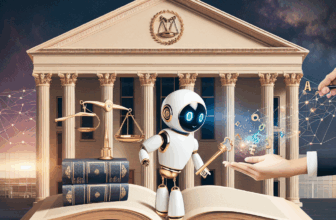From Memory to Asset: Utilizing AI for Efficient Digital Asset Recovery in UK Probate
Table of Contents
- Introduction
- Understanding Digital Assets
- 2.1 Definition of Digital Assets
- 2.2 Types of Digital Assets
- 2.3 Importance of Digital Assets in Probate
- The Role of AI in Asset Identification
- 3.1 AI Tools and Technologies
- 3.2 How AI Enhances Digital Asset Recovery
- Challenges in Digital Asset Recovery
- 4.1 Legal and Ethical Issues
- 4.2 Technical Limitations
- 4.3 Emotional Barriers
- Steps to Efficient Digital Asset Recovery
- 5.1 Initial Preparations
- 5.2 Utilizing AI Solutions
- 5.3 Documentation and Record Keeping
- Case Studies: Successful Digital Asset Recoveries
- 6.1 Case Study 1: Recovering Crypto Assets
- 6.2 Case Study 2: Retrieving Social Media Accounts
- Frequently Asked Questions (FAQ)
- Conclusion and Future Trends
- Resources
- Disclaimer
Introduction
In today's increasingly digital world, the relevance of digital assets has escalated dramatically, particularly in the context of inheritance and probate. As lives become intertwined with the internet, understanding how to manage and recover these assets upon death is crucial. This article will explore the efficiency of AI in aiding the recovery of digital assets in the UK probate process.
Understanding Digital Assets
2.1 Definition of Digital Assets
Digital assets refer to any form of content or resource that exists in a digital format and holds value. They can range from cryptocurrencies and online bank accounts to social media profiles and digital files. The definition has evolved over the past years as society has embraced digital communication and transactions.
2.2 Types of Digital Assets
Digital assets can be classified into various categories:
- Cryptocurrencies: Digital currencies like Bitcoin, Ethereum, and others stored in digital wallets.
- Financial Accounts: Online banking accounts, investment portfolios, and payment platforms.
- Intellectual Property: Digital content such as e-books, music, photographs, and artwork.
- Social Media Accounts: Platforms such as Facebook, Twitter, and Instagram, which may have sentimental or commercial value.
- Domain Names and Websites: Owned digital property that might generate revenue or hold personal significance.
2.3 Importance of Digital Assets in Probate
As more value becomes attached to digital assets, their importance in the probate process cannot be overlooked. An estate might include substantial financial worth through cryptocurrencies or significant sentimental value via photo archives and social media memories. Understanding and effectively managing these assets can have profound implications for the deceased's heirs.
The Role of AI in Asset Identification
3.1 AI Tools and Technologies
Artificial intelligence (AI) encompasses a range of technologies designed to perform tasks that typically require human intelligence. In the context of digital asset recovery, AI can include:
- Predictive Analytics: Algorithms that can analyze data trends to identify potential asset locations.
- Natural Language Processing (NLP): AI systems that can interpret and manage text data, such as emails, messages, and documents.
- Blockchain Technology: Provides a secure and transparent way to manage digital transactions, particularly for cryptocurrencies.
3.2 How AI Enhances Digital Asset Recovery
Harnessing AI increases the efficiency and accuracy of digital asset recovery. With the ability to analyze large datasets at high speeds, AI can uncover hidden assets, track digital footprints, and offer insights into asset valuations. It simplifies the complex landscape of the digital world, making it more accessible for executors and heirs during the probate process.
Challenges in Digital Asset Recovery
4.1 Legal and Ethical Issues
The recovery of digital assets presents unique legal challenges, particularly concerning privacy laws and data ownership. Executors may face hurdles in accessing accounts if passwords are unknown or if the deceased did not leave clear instructions on digital estate management.
4.2 Technical Limitations
Despite advancements, AI tools can have technical limitations. Issues such as incomplete data, digital obsolescence, and software compatibility can complicate the asset identification process. Additionally, exclusive access to certain platforms may require specific legal procedures to retrieve data.
4.3 Emotional Barriers
The process of dealing with the inheritance of digital assets can also be emotionally charged. The grief of losing a loved one may impact decision-making, and managing emotional attachments to digital content can create barriers to effective recovery.
Steps to Efficient Digital Asset Recovery
5.1 Initial Preparations
Before commencing the recovery process, executors must make initial preparations:
- Gather Necessary Information: Document where digital assets are likely stored, including platforms and wallets.
- Legal Framework: Understand the legal requirements involved in accessing the deceased's digital assets.
5.2 Utilizing AI Solutions
Employ AI-powered tools to streamline the recovery process. Tools that can analyze data across multiple platforms can aid significantly in identifying less obvious assets. Key steps include:
- Data Mining: Use AI to sift through emails and files for mentions of digital assets.
- Sentiment Analysis: AI can evaluate emotional content attached to social media accounts and digital files, aiding in determining value.
5.3 Documentation and Record Keeping
Maintain meticulous records throughout the recovery process. Note all findings, communications, and legal documents related to digital assets. This documentation is vital for legal clarity and future reference for heirs.
Case Studies: Successful Digital Asset Recoveries
6.1 Case Study 1: Recovering Crypto Assets
John, a theoretical figure, passed away unexpectedly, leaving behind a crypto wallet with significant Bitcoin holdings. His family was unaware of its existence. Utilizing AI tools, his executor was able to dig through digital communications to retrieve the encryption keys necessary to access the wallet. This case illustrates how AI can bridge knowledge gaps in digital asset management.
6.2 Case Study 2: Retrieving Social Media Accounts
Mary’s family faced challenges accessing her cherished photographs stored on a private social media account. With the help of a digital recovery service utilizing AI, they successfully navigated privacy settings and obtained access to her account. Mary's rich digital legacy was preserved and shared among family members, highlighting the emotional importance of digital assets.
Frequently Asked Questions (FAQ)
-
What are digital assets?
- Digital assets include cryptocurrencies, online accounts, and intellectual property that exists in digital form.
-
How can AI assist in recovering digital assets?
- AI tools can efficiently analyze and retrieve data across multiple platforms, simplifying the identification and recovery process.
-
What legal hurdles exist in digital asset recovery?
- Privacy laws and data ownership issues may make accessing digital assets complicated.
-
Are emotional considerations involved in digital asset management?
- Yes, emotional attachments to digital content can impact decision-making during asset recovery.
-
Can digital assets hold substantial value?
- Absolutely, from financial worth in cryptocurrencies to sentimental value in digital photographs, they can be significant in probate.
Conclusion and Future Trends
As digital assets become an integral part of our lives, their management during probate processes is imperative. The role of AI in simplifying and enhancing digital asset recovery offers promising advancements. Future developments may see improved legality around digital asset management, enhanced AI tools, and a better understanding of emotional factors involved in the inheritance of digital assets.
Resources
| Source | Description | Link |
|---|---|---|
| Digital Asset Estate Planning | Guidance on managing digital assets in estate planning | Link |
| AI in Asset Management | Overview of AI applications in asset management | Link |
| UK Probate Guide | Official information on UK probate processes | Link |
Disclaimer
This article is a product of A.I. and is in Beta Testing. The information provided is for general informational purposes and should not be taken as legal advice. Readers are encouraged to consult with legal professionals for specific guidance tailored to their circumstances.










